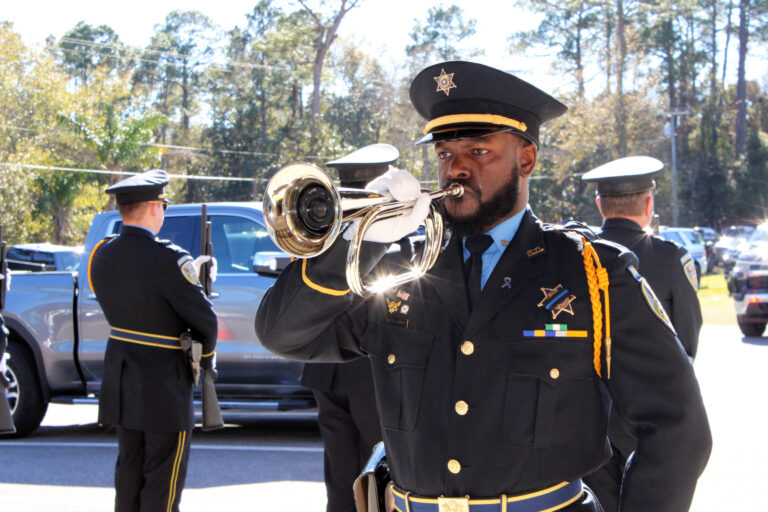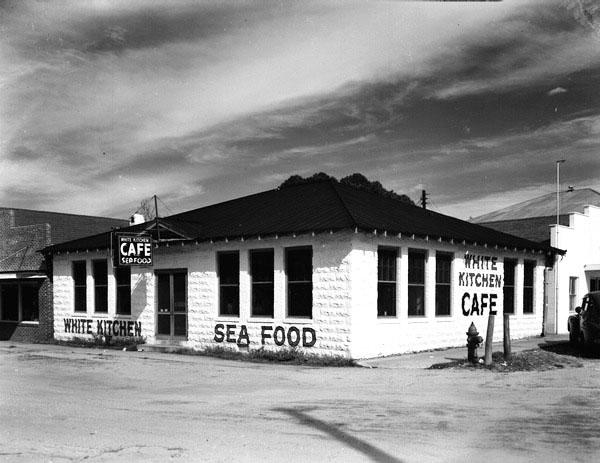Legacy Post Disclaimer
This is a #Legacy post imported from The Apalachicola Time’s previous platform. If you’re experiencing issues with this article, please email us at news@nevespublishing.com.
Carrabelle OKs controversial dollar store
After a more than five-hour meeting, Carrabelle commissioners approved May 5 a final site plan for a new Family Dollar/ Dollar Tree store in the heart of downtown, a project that drew both heightened community opposition and support since it was first unveiled two years ago.
With Cal Allen the lone dissenter, commissioners voted just before 11 p.m. to approve the placement of a roughly 10,500-square-foot store in the vacant field to the northwest of the intersection of U.S. 98 and Tallahassee Street, in front of the former Gulf State Community Bank, on land owned by former bank president Cliff Butler.
A key reason for the lengthy meeting was due to a more than 90-minute recounting, at the outset, by Mayor Brenda La Paz of all the emails, personal discussions and other ex parte communications she has engaged in since Twin Rivers Capital, a real estate developer based in Charleston, South Carolina, first unveiled plans in fall 2020.
Last month, Carrabelle Historical Preservation Inc, a non-profit headed by Carrabelle businessman Michael Pace opposed to the dollar store project, went to circuit court to compel La Paz and City Clerk Keisha Messer to produce all telecommunication records related to Twin Rivers between Oct. 15 and Dec. 9, 2020. These would include all text messages and phone records.
City Attorney Dan Hartman filed a motion challenging the petition, arguing Pace is not an attorney and that Florida law makes clear that “a corporation is not a person entitled to represent itself nor may it nominate a non-lawyer to do so.”
This lawsuit was why La Paz offered a lengthy recitation, complete with dates, times and places, of all her communication, both with Twin Rivers and with the Carrabelle public, since the project first crossed the city’s desks.
“Being mayor I have a lot of unsolicited communication. I’m well-known for an open door policy,” she said. “The only way to have prevented (this communication) would be to sequester myself in a hotel room with no telephone or email access.”
The four other city commissioners offered briefer overviews of their communication, and Hartman gave the audience a chance to question whether any of their comments to city officials were being misrepresented.
The only serious challenge to La Paz’s accuracy came from Bo May, vice-president of Carrabelle Historical Preservation, who said La Paz failed to mention she and May had walked the adjacent parking lot. “You were talking about your idea of a horseshoe around the building,” he said.
“I cannot remember everything,” La Paz replied.
“We (the city) accepted their (Twin Rivers’) idea of giving up highway access for absolutely nothing,” May said. “That’s what they wanted, Highway 98 access.”
The issue of access to U.S. 98, and the creation of a thoroughfare alongside the post office that would enable egress into the Family Dollar parking lot, was batted back-and-forth over several months between developers and City Engineer Russell Large, with Inovia.
When the city’s planning and zoning board last month voted 4-2 to recommend the project, they attached four conditions, including the placement of an 18-inch curb to limit movement between the post office parking lot, as well as a permanent reciprocal easement with the city regarding the drive-through lane.
Dustin Looper, Twin Rivers’ attorney, said the company either had complied, or would comply at the appropriate step in the process, to all of the conditions.
Opposition to Twin Rivers’ plan came from Vision Carrabelle, LLC, a local non-profit that enlisted an attorney, Ian Waldick, and an engineer, Ken Jones, to argue their case before commissioners.
Jones contended the project’s stormwater plans were not suited to the floodplain on what he termed “the last major parcel in downtown Carrabelle.
“What are we going to do to mitigate flooding?” he asked. “All the land is going to be filled except for a stormwater pond. The only place they said anything about flooding is mentioning the 100-year floodplain.
“This is a difficult site, and in a development like this, you want to provide a lot of information,” Jones said. “I would have expected some narrative of how often they flood and when they flood. I would like to see a much better analysis,”
The engineer said the absence of a thorough compensatory volume calculation, which is a way of measuring what happens with excessive rainfall, is a deficiency in the company’s analysis.
“Their lack of recognition of this one major issue, and having a compensatory engineering analysis by another engineer who has not signed off, that potentially lets them off the hook,” Jones argued. “There is nothing to show they have mitigated the fill. The surge up and down the river as it relates to flooding has to be analyzed so you know how to deal with what will be the impact of what you’re doing in that floodplain and how will that (water) be transferred.
“The parking lot behind the post office is so low that that’s where it’s going to go and fill up first,” he said.
After hearing from land use planner Suzanne Woodcock, David Printiss, who along with wife Angela are key leaders of Vision Carrabelle, made a plea for Twin Rivers to reconsider their placement.
“I own property and block-and-a-half away, : he said. “I do believe my property values will diminish as a result of this development.
“There have been no less than five submissions (of site plans) and the first four are woefully inadequate,” he said. “The entire application ignores the history of flooding at this site.”
Printiss proposed that a different site be selected, in what he called “a win-win-win opportunity” in that the city could receive tax benefits, Twin Rivers could secure their project and Carrabelle could remain a “vibrant productive vacation destination,”
Looper challenged Vision Carrabelle’s assertions, suggesting that the opponents were using scare tactics.
“They’re incomplete comments that others will find scary,” he said. “We know a 2.5-acre site can handle a 10,000-square-foot building. We are standing on the shoulders of engineers who work in this county, who have a reputation to protect in this county.
“Though he(Jones) does have a good resume, as do I, the fact of the matter is if an engineer comes to me and says I gave a cursory review, I am not going to put stock in that,” said Looper.
The project received a thumbs-down from residents Martha Murray, Sharon Glaze, Lewis Christie, Kathleen Oman and Doug Detrick, while it got support from Nikki Millender and Genevieve Putnal.
“We have no code enforcement in this city,” said Glaze. “How are you all with no code enforcement going to police what goes on in a big box store parking lot?”
Oman said she recalled something Allen had said to her years ago, when he described the landscape.
“You don’t see McDonalds, you don’t see Pizza Hut, you don’t see the big box stores,” said Oman. “I don’t know if you’ve changed your mind but I don’t want to see it.”
Putnal had a different view. “Think about the people, how it will benefit the people,” she said.
“I lived here 44 years and I’ve never seen that property flooded even in Hurricane Michael,” said Millender. “A lot of people talk about an eyesore. Marine Street is what I consider downtown, but when I drive through here and see drunks hanging out and drug deals going on, that’s what I call an eyesore.”





Meet the Editor
David Adlerstein, The Apalachicola Times’ digital editor, started with the news outlet in January 2002 as a reporter.
Prior to then, David Adlerstein began as a newspaperman with a small Boston weekly, after graduating magna cum laude from Brandeis University in Waltham, Massachusetts. He later edited the weekly Bellville Times, and as business reporter for the daily Marion Star, both not far from his hometown of Columbus, Ohio.
In 1995, he moved to South Florida, and worked as a business reporter and editor of Medical Business newspaper. In Jan. 2002, he began with the Apalachicola Times, first as reporter and later as editor, and in Oct. 2020, also began editing the Port St. Joe Star.